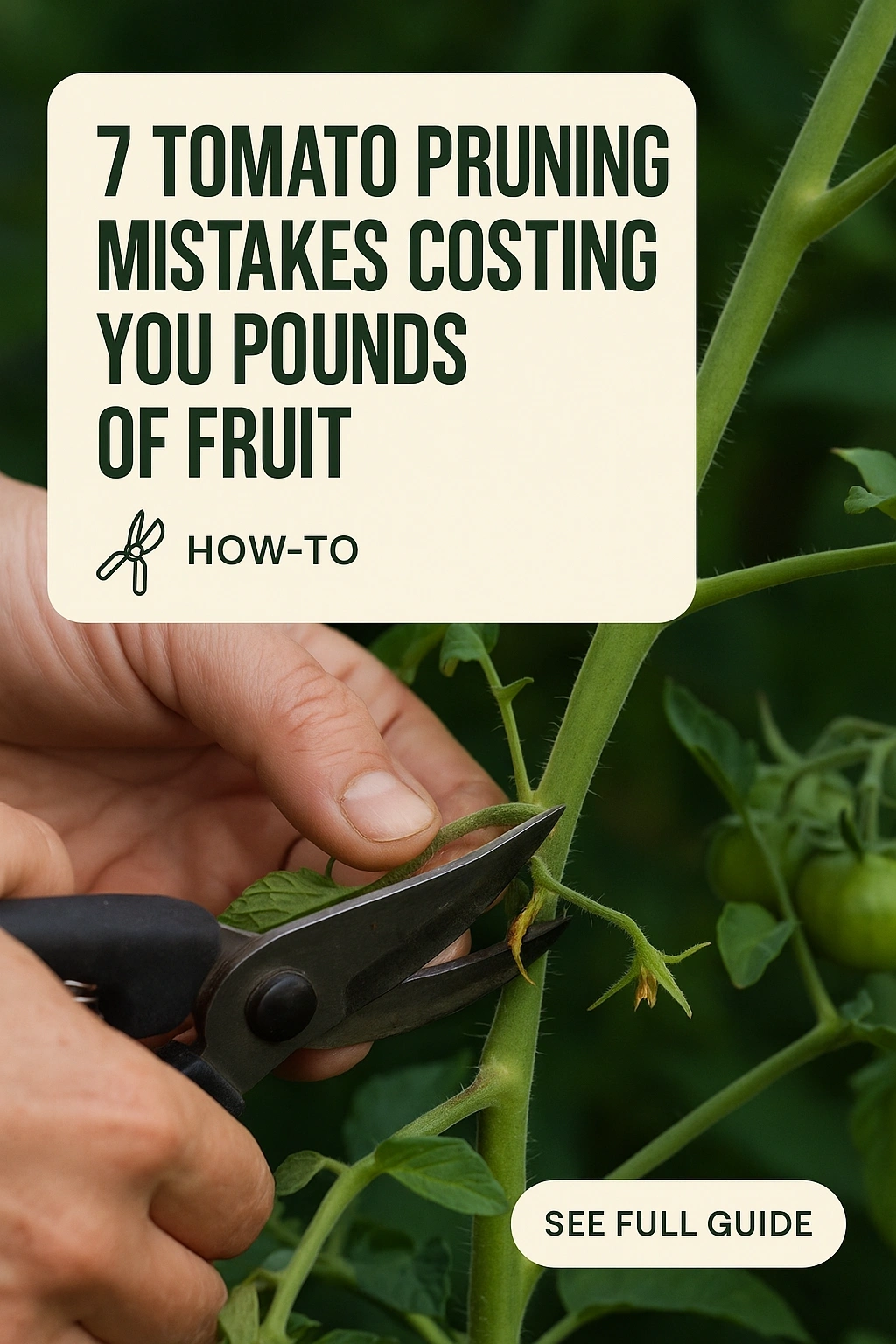
Pruning tomatoes can be a game-changer for your garden, but many gardeners make common mistakes that could cost them significant yields. Understanding these pitfalls and how to avoid them can lead to healthier plants and more abundant harvests. Discover the seven critical pruning mistakes that can limit your tomato production and learn how to maximize your fruit yield with effective pruning techniques.
1. Ignoring the Right Time to Prune
Timing is crucial when it comes to pruning tomato plants. Many gardeners make the mistake of pruning too late or too early in the growing season. Early in the season, pruning can help establish a strong structure, while late pruning may stress the plant and reduce yields.
Best Timing for Pruning
The best time to start pruning is when your plants are young and have established at least a few sets of true leaves. Aim to prune in the morning or late afternoon when temperatures are cooler, reducing stress on the plants.
2. Over-Pruning Your Tomato Plants
Another common mistake is over-pruning, which can lead to reduced fruit production. While removing excess foliage can improve air circulation and light exposure, cutting too much can inhibit growth and energy production.
Finding the Balance
Focus on removing suckers and dead or yellowing leaves. Leave enough foliage to ensure the plant can photosynthesize effectively. A good rule of thumb is to maintain a balanced number of leaves for optimal fruit development.
3. Neglecting to Prune Suckers
Suckers are the small shoots that develop in the leaf axils of tomato plants. Many gardeners overlook these, which can lead to overcrowded plants and smaller yields. Failing to prune suckers allows them to divert energy away from fruit production.
Identifying and Managing Suckers
Regularly check your plants for suckers and prune them when they are still small (around 2-4 inches). This will help direct the plant’s energy towards fruit production rather than unnecessary foliage.
4. Using Dull or Unsuitable Tools
The tools you use for pruning play a significant role in plant health. Many gardeners make the mistake of using dull or inappropriate tools, which can cause damage and increase the risk of disease. Clean cuts are essential for rapid healing.
Choosing the Right Tools
Invest in sharp, clean pruning shears or scissors specifically designed for gardening. Ensure they are sterilized before use to prevent the spread of diseases. Regular maintenance of your tools is also important to ensure efficient and clean cuts.
5. Failing to Understand the Tomato Variety
Different tomato varieties have unique growth habits and requirements. Failing to understand these can lead to improper pruning techniques. Indeterminate varieties, for example, require different care compared to determinate types.
Pruning Based on Variety
Indeterminate tomatoes benefit from more aggressive pruning to encourage upward growth and airflow. Determinate varieties, on the other hand, require less pruning as they grow to a set height and produce fruit all at once.
6. Not Considering Plant Spacing
Proper plant spacing is crucial for healthy growth. Many gardeners either overcrowd their plants or space them too far apart, leading to wasted space and reduced yields. Overcrowding can lead to competition for nutrients and light.
Optimal Plant Spacing
Ensure that you space your tomato plants adequately, typically around 18 to 24 inches apart, depending on the variety. This allows for proper air circulation and light exposure, both essential for preventing disease and maximizing fruit production.
7. Neglecting Post-Pruning Care
After pruning, many gardeners fail to provide proper care for their plants. Post-pruning care is essential for helping your tomato plants recover and thrive. Neglecting this step can result in stress and lower yields.
Post-Pruning Care Tips
After pruning, ensure your plants receive adequate water and nutrients. Monitor for signs of stress, such as wilting or yellowing leaves, and adjust your care routine accordingly. Consider applying a balanced fertilizer to support recovery and growth.
FAQs
What are the benefits of pruning tomatoes?
Pruning tomatoes helps improve air circulation, reduces disease risk, and promotes better light exposure, leading to healthier plants and increased fruit yield.
How often should I prune my tomato plants?
Regularly check your tomato plants throughout the growing season, typically every week or two, to remove suckers and any dead or diseased leaves.
Can I prune my tomatoes too much?
Yes, over-pruning can stress the plants and reduce yields. It is important to find a balance and only remove what is necessary for plant health.
What is the best time of day to prune tomatoes?
The best times to prune tomatoes are in the morning or late afternoon, when temperatures are cooler, reducing stress on the plants.
Should I water my tomato plants after pruning?
Yes, providing adequate water after pruning can help the plants recover and minimize stress. Ensure the soil remains moist but not waterlogged.
